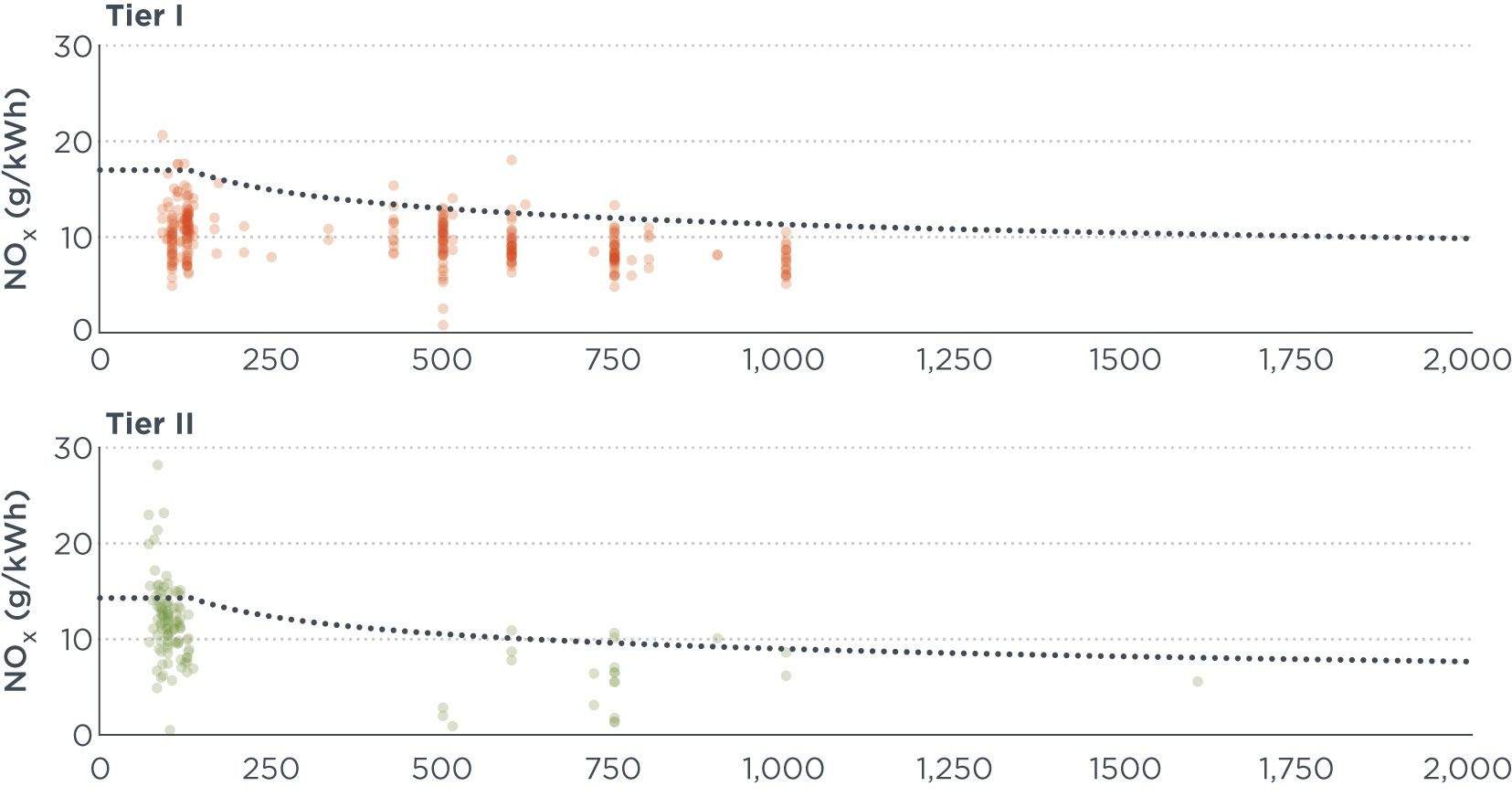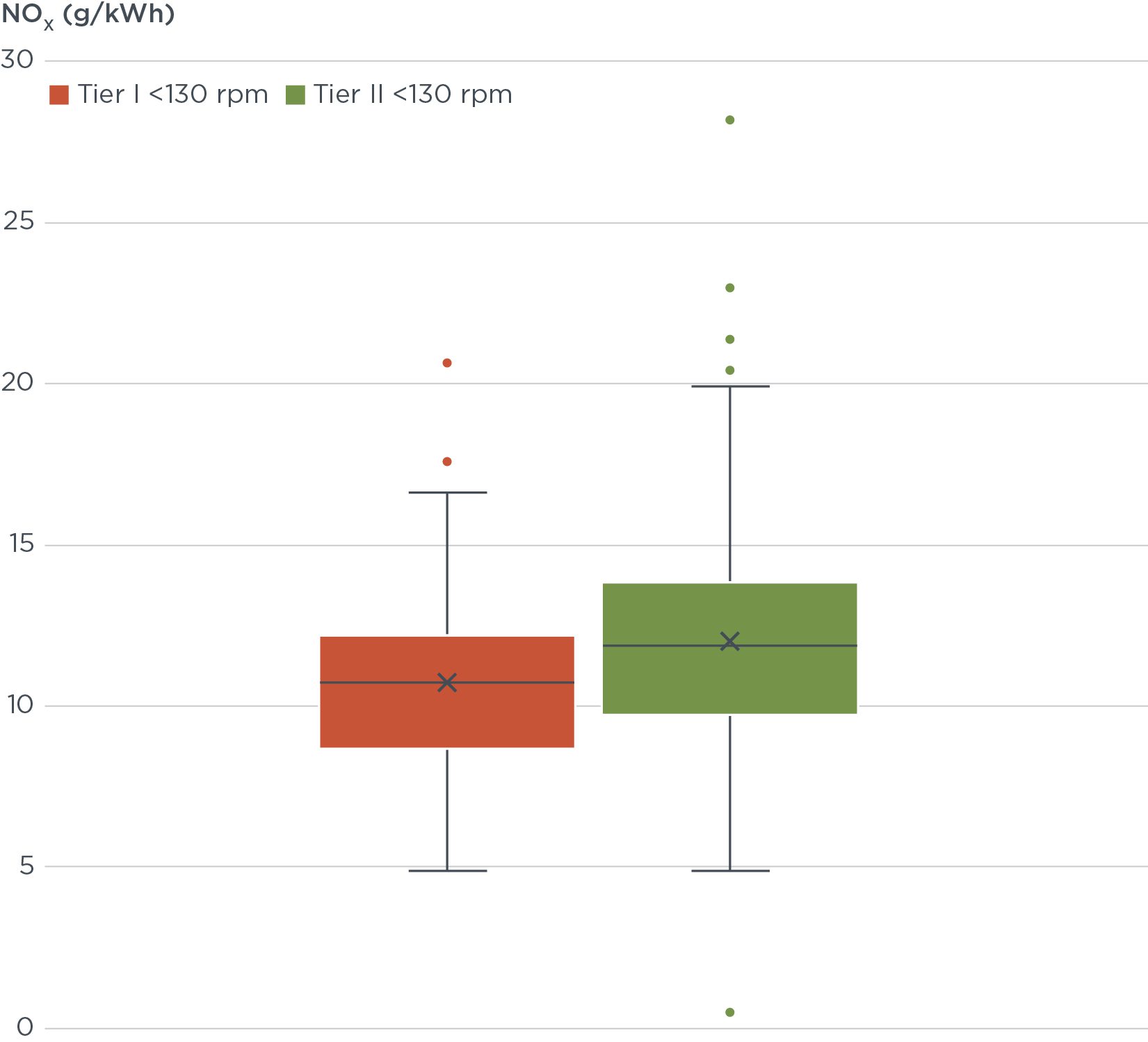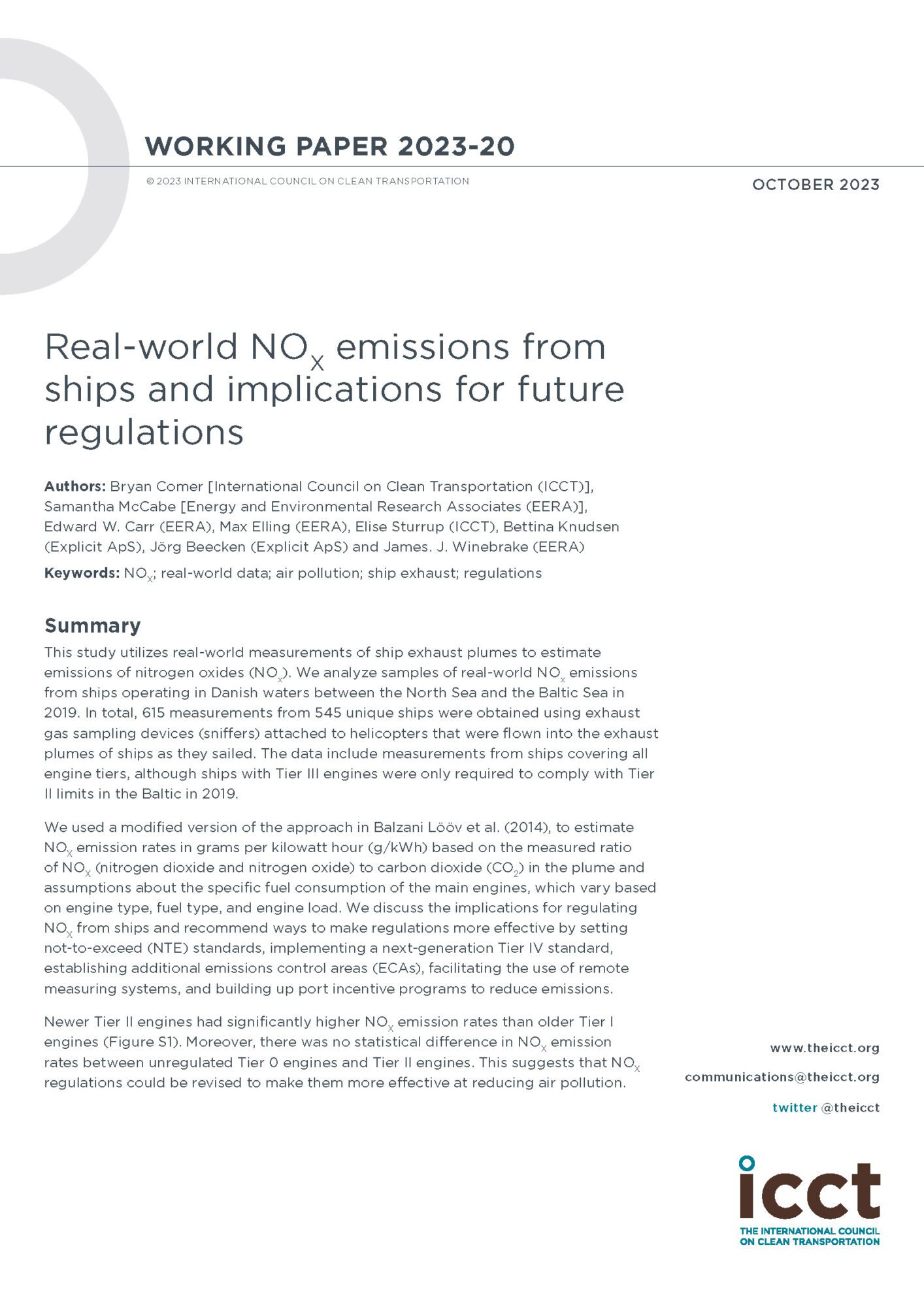Real-world NOx emissions from ships and implications for future regulations
Blog
Opportunity NOx: How to fix the IMO’s backwards air pollution regulation
Nitrogen oxides (NOx) are air pollutants emitted when internal combustion engines burn fuel. NOx emissions contribute to the formation of smog and acid rain and, more broadly, contribute to human health problems and environmental damage. The United Nations International Maritime Organization (IMO) has been regulating NOx emissions from marine engines for decades, but new research from the ICCT and partners has revealed that ships with newer engines are emitting more NOx than those with older engines.
We found that Tier II engines, which were built between 2011–2015, emitted an average of 10.9 grams of NOx per kilowatt-hour (g/kWh), compared with 9.8 g/kWh for older Tier I engines, which were built between 2000–2010. This difference was statistically significant (T-test, p <0.01). These statistics were derived from 311 measurements of Tier I engines and 124 measurements of Tier II engines, covering all engine speeds (rpm).
It’s important to note that the IMO differentiates its NOx regulations by rpm. The higher the engine rpm, the lower the allowable NOx limit. When we looked at the data, we saw something interesting: newer Tier II engines tended to have lower rpm than older Tier I engines, as shown in Figure 1. The lower the rpm, the larger the engine, and the higher the allowable NOx limit, with the highest limits applying to engines <130 rpm.
In Figure 1, the left-most cluster of dots are the NOx measurements from engines <130 rpm. It’s reasonable to wonder whether the higher NOx emissions we observed for Tier II engines are simply because these are mainly larger, lower-rpm engines. To investigate this question, we compared measured NOx emissions rates for Tier I and Tier II engines <130 rpm.

Figure 1. NOx emission rates (g/kWh) by engine rpm and tier, compared with weighted regulatory limits.
Figure 2 shows a boxplot of NOx emission rates for ships with Tier I and Tier II engines <130 rpm. We had 121 measurements of ships with Tier I engines <130 rpm and 100 measurements for ships with Tier II engines <130 rpm. On average, Tier I emitted 10.7 g/kWh, compared with 12.0 g/kWh for Tier II. This difference was statistically significant (T-test, p <0.01). By comparing results from the same rpm range, we clearly determined that the increase in NOx emissions for ships with Tier II engines isn’t just because the newer engines tend to be larger and slower.

Note: x shows mean; horizontal bars inside the boxes show median; boxes show interquartile range; whiskers show minimum and maximum (excluding outliers); dots show outliers.
Figure 2. Boxplot showing the distribution of observed NOx emission rates for ships with Tier I and Tier II engines with engine speeds below 130 rpm.
Obviously, newer engines shouldn’t emit more air pollution than older engines, especially when Tier II engines are supposed to emit 15–20% less NOx than Tier I engines, according to IMO regulations. In our study, we pointed out that engines are certified on a test cycle that weights emissions at higher engine loads more than those at lower engine loads. In reality, ships tend to operate at lower engine loads, when NOx emission rates are higher. The highest NOx emission rates were observed when ships were operating at below 25% main engine load, averaging 11.6 g/kWh for ships with older Tier I engines (all rpms) and 13.5 g/kWh for ships with newer Tier II engines (all rpms). Emissions below 25% engine load are omitted from the NOx engine certification scheme for most engines, meaning they are essentially unregulated.
To fix IMO’s NOx regulation, member states should add an additional test point below 25% engine load. Data from our NOx study shows that ships with Tier I or Tier II engines are spending approximately 5% of their time operating below 5% engine load and 10% of their time operating below 15% engine load. To split the difference, a new test point at 10% engine load could help characterize low-load emissions. In addition to this new test point, we recommend that the IMO consider establishing not-to-exceed (NTE) standards that prevent excess pollution across all engine loads, even those outside the test points. These limits should apply to both new and existing engines because waiting for the shipping fleet to turnover (the average ship is more than 22 years old) risks long delays in providing relief to coastal communities that are most impacted by shipping’s air pollution.
Properly regulating NOx emissions will continue to be important, even as the sector works to implement its decarbonization strategy (which we analyzed here) because any fuel that is combusted in a marine engine – hydrogen, ammonia, methanol, etc. – produces NOx. The next opportunity for IMO delegates to consider how to revise NOx regulations comes at the 11th session of IMO’s Pollution Prevention and Response (PPR) subcommittee meeting in February 2024.
Member states and international organizations have been invited to provide information on in-service engine NOx emissions measurement campaigns, including findings from recent studies. That’s a good start, and our study results will be included in a PPR submission, but IMO delegates should go farther. At PPR 11, member states and international organizations should recommend that the IMO’s Marine Environment Protection Committee establish a new work output focused on revising the NOx standards for new and existing ships, with a particular focus on reducing NOx emissions at low engine loads. Opportunity knocks, and it’s time to answer.
Author
Related Publications
Real-world NOx emissions from ships and implications for future regulations
This working paper utilizes real-world measurements of ship exhaust plumes to estimate and compare emissions of nitrogen oxides (NOx) from new and old engines.


